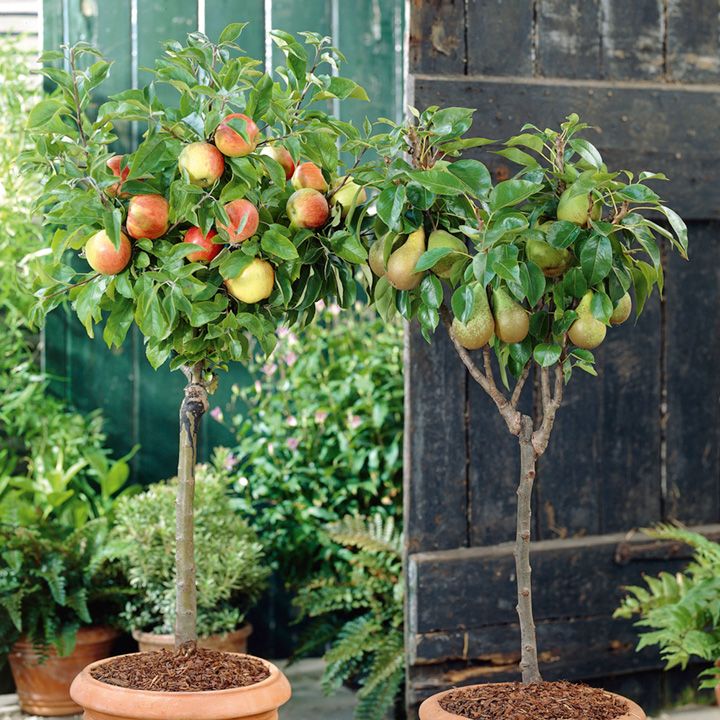Growing apple trees as container plants can reduce garden pests and disease and improve edible apple crops. Here’s how to start growing apples in container gardens.
Producing edible apples for the family fruit bowl, baking apple pies and apple crumble with little fuss outweighs any gardening worries about getting started growing apples trees as container plants.

Growing Apple Trees as Container Plants

Malus domestica or Apple can work reasonably well as a fruit tree to grow in large garden tubs outdoors. Container gardeners can join in the apple harvest in coming years by planting small apple trees in containers.
Being short of garden space for growing apples is not a good enough reason not to try growing apple trees for their fruit. Others reasons that gardeners cite include:
- Concerns that the tree will grow too large for the garden container and become pot bound.
- Lack of credible advice about recommended varieties of apple trees as container plants.
- Experience of growing vigorous Malus domestica varieties such as ‘Golden Delicious’ only.
These concerns can be overcome and interested fruit gardeners can be growing apple trees as container plants in the coming season.

Growing apples trees as container plants is possible in a small garden and with expert fruit growing advice. Gardeners with no opportunity to buy apple trees or large garden tubs from a nursery or garden centre nearby, are advised to search online for a state or regional apple tree stockist that will delivery to their zip code or postcode.
Growing Apples in Container Gardens

Any apple tree can be successfully grown and produce edible crops in a container. The container must be a large garden tub or half barrel suitable for growing plants outdoors. Malus or apple varieties growing in a garden container or large garden tub will have the same initial growing pattern as an apple tree planted in open garden soil. Apple trees will take two to three years to become established.
Growing apples in containers brings three advantages:

- After the growth and pruning of the apple tree in the first two to three years, there will be little to no pruning required for container growing of apple trees.
- Smaller trees on rootstocks, called ‘dwarfing’ or ‘semi-dwarfing’, planted in containers are easier for gardeners to inspect for garden pests and disease and treat if required.
- Ladders will not be required for harvesting apples.
Buying Apples Trees and Large Garden Tubs from Nurseries and Garden Centres

Apple trees need other apple trees for pollination which leads to fruit production. Gardeners should check with expert fruit tree nurseries and garden centres about cross-pollination of their apple tree varieties. Some apple trees are triploid varieties meaning two other compatible Malus domestica varieties are essential to be planted in containers in close proximity. Many Malus domestica varieties require just one other variety to pollinate.
Jim Arbury writes about pollination compatibility in ‘Growing tree fruits’ in Vegetable and Fruit Growing: The Definitive Guide to Successful Growing (Dorling Kindersley, 2008): “Most cultivars are diploids (with two sets of chromosomes)… The triploid cultivars, such as those found in some apples and pears, have three sets of chromosomes and are ineffective pollinators, needing to be grown with two other diploid cultivars that will pollinate each other and the triploid”.
Gardeners wishing to grow an apple tree will need to buy two or three apples trees and large garden tubs or containers from garden centres and nurseries for planting out in a suitable microclimate of their garden. Once planted in container gardens, a small orchard of apple trees will produce edible apples with relative ease.





